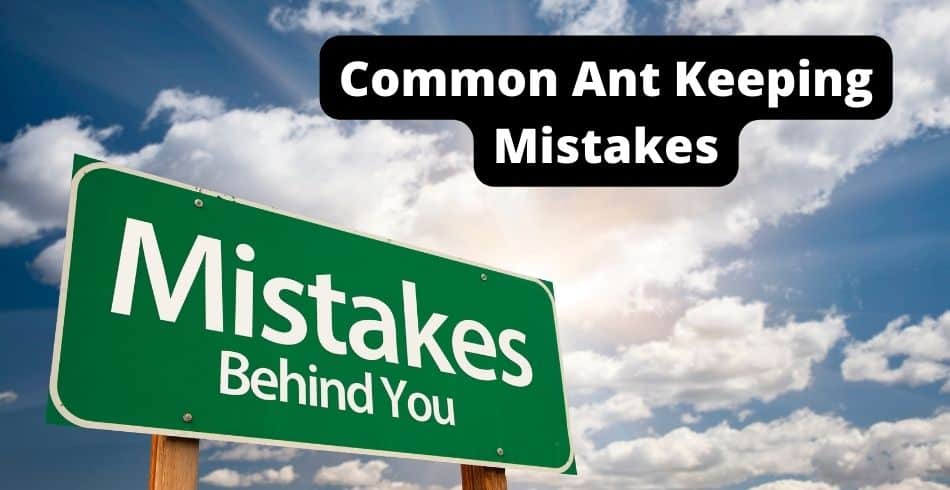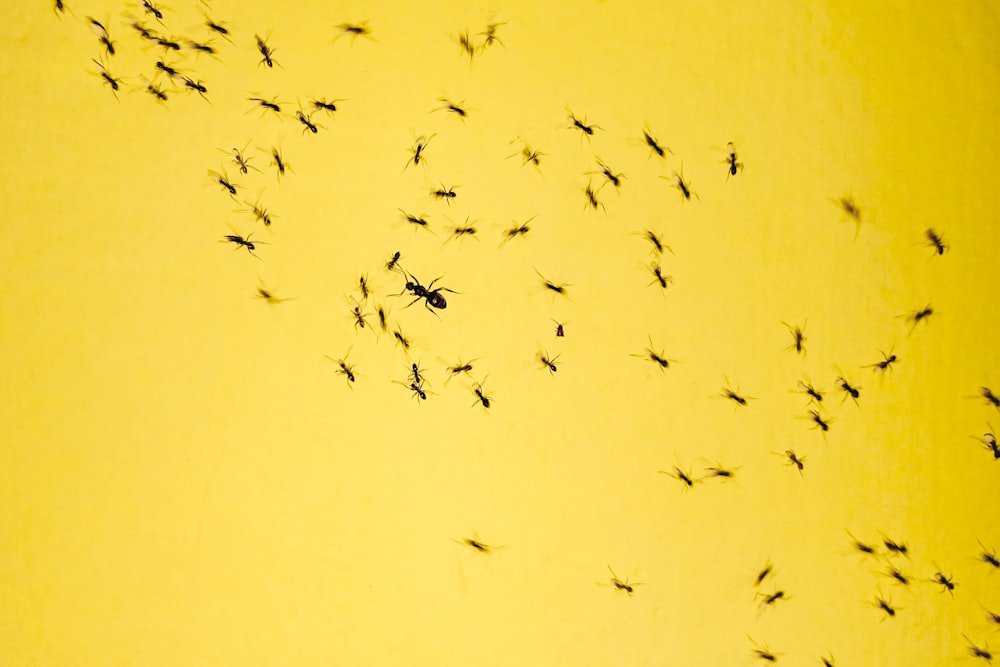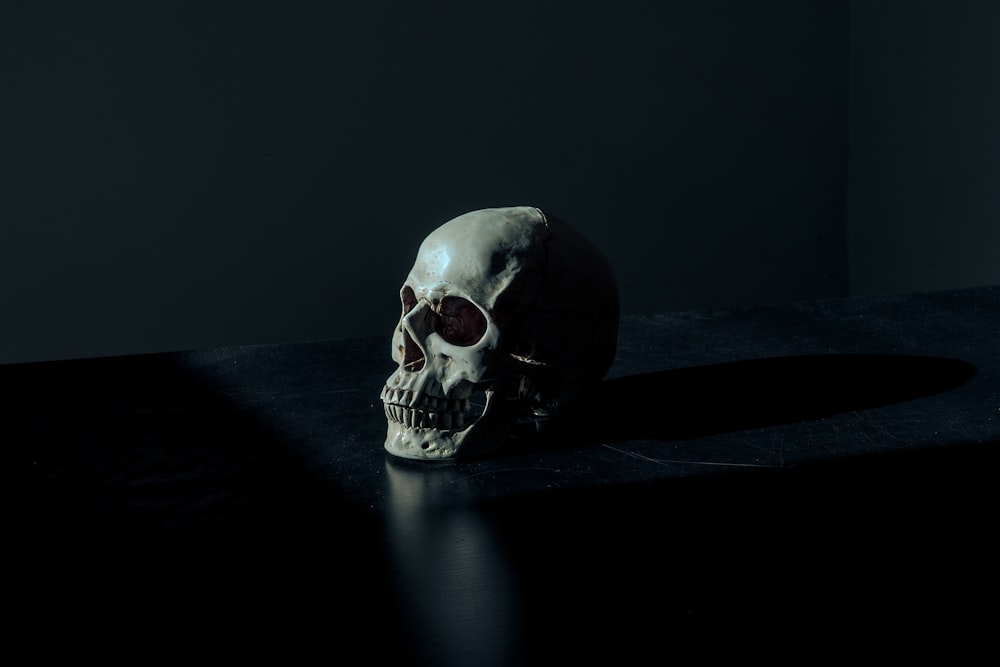It’s incredible that you want to raise an ant farm. But please, do not make any of these mistakes – as we’ve already made them for you. We want to ensure that your ants live, and it’s a bad idea to make any of these mistakes listed below:
- Multiple Kinds of Ants in a Single Formicarium.
- Not Being Careful with the Test Tube.
- Too Big or too Small Formicarium.
- Failure to Let Ant Nest Hibernate.
- Not Enough Nutrients are Provided.
- No Prior Research.
- You are Not Removing Dead Ants from the Ant Farm.
- The Temperature or Lighting is Not Favorable.
- Several Queens in one Ant Nest.
Below we will have all of them laid out and go through each step so that you don’t make the same mistakes as us.
Give these a read every few weeks just to double-check that you aren’t making any of these mistakes, as it’s easy to forget – use this as a checklist!
1. Multiple Kinds of Ants in a Single Formicarium.
There are tons of large colonies of ants all around the earth, and there are even a ton right in your backyard.
This may lead you to believe that these ants can live in the same colony together.
They can not.
They will fight, and they will die.
Even ants of different colonies with the same breed will go to battle.
Colonies use a particular colony odor to distinguish members of their colonies.
Any ant which does not contain that odor is viewed as a threat.
Never combine your ants.
Instead, you should start two different colonies.
This will give you an advantage if one grows faster than the other!
2. Not Being Careful With The Test Tube.
Detach the cap from the opening of the tube.
You’ll need to be extra careful while filling up one end with water.
Once you’ve filled one, end up about 30% with water, and stuff the cotton ball all the way down until water starts to soak it.
If you do not press the cotton ball all the way down, the ants will not be able to get any water
However, if you press it too far down, This will cause fluid leakage into the nesting area, swamping the ants.
Before dropping your Queen Ant in, double-check that the end facing the opening is moist, but not dripping with water.
This will prevent the colony from flooding and sinking.
Ants will drown; remember their small size.

Keep the test tube away from things like direct sunlight or anything that magnifies heat.
Place your test tube somewhere that makes sense.
For example, the stovetop would not be a good place for a test tube.
We keep ours in the Formicarium – as that will be their future home.
The plastic capsules (or cotton balls) must only be detached when the colony hits capacity.
We wait for 50-100 ants before releasing our ants from the test tube.
This will increase your likelihood of success.
We sometimes have had ants live in these test tubes for over a year.
During these periods, a black mold may grow on the cotton.
Pro Tip: Do Not Panic.
It is not hazardous to the colony and is typical in a tube arrangement.
You should look if your queen is fully-claustral or semi-claustral.
In our main guide, we go over why we think fully-claustral Queen ants are a good go-to during your first attempt at ant-keeping.
Anyways, if your queen ant is semi-claustral, you’ll have to feed her.
[amazon box=”B07QHT3TS8″]
3. Too Big or Too Small Formicarium
The ant colony will need to be housed in the Formicarium, and this housing will provide space and protection for the queen ant, ant workers, and the colony’s eggs.
The Formicarium will supply the humidity necessary for the Ant’s offspring and the colony to survive.
Depending on the type & conditions of the Formicarium, the moisture and food supply will need to be checked every 2-5 days.
Formicarium’s come in many shapes and sizes.
Make sure you pick the one that makes the most sense for you.

When there is a lot of room in a Formicarium, ants will tend to fill it with waste.
As the population increases, many people continue to improve the size of their Formicarium.
While eventually, you will probably need to upgrade
ants like to be a little squished.
Most colonies with fewer than 50 ants only need a couple of compartments.
Fill in the empty tunnels with sand (or whatever substrate you’re using) to not let the ants explore this area.
As your colony grows – take out the packed-in substrate in these areas and allow your ants to explore.
4. Failure to Let Your Ant Farm Hibernate
Your queen and worker ants need some rest.
She will be laying eggs throughout the year which will exhaust her.
Without proper rest, her life span will decrease, and she will not continue to lay eggs.
In the first year, a colony should always hibernate. After that, it seems to be much less impactful.
In our experience, a Queen Ant would only survive for 2-3 years if she did not hibernate in that first one.
Some ant keepers try to keep their ants out of hibernation, which is very risky and could exhaust your Queen.
If your ants do not hibernate, or you do not allow the cold temperature to reach the farm.
They will continue to wait and work if the cold weather does not arrive.
Do you want to overwork your colony?
Make sure your Ants hibernate!
If the colony is new, the initial workers have a much shorter lifetime than regular workers.
These workers may only live as little as three to four months, and hibernation rejuvenates them and prolongs their lifespan.
If you do not hibernate, the Queen may try and force it.
She will “sense” that winter has arrived and stopped laying eggs even when the temperature has not dropped.
As a result, no young workers are produced.
This can lead to some bad and awkward timing.
Potentially leaving you with only a queen, zero workers, and no eggs in springtime.
Some queens survive, but complete colony collapse is possible.
5. Not Enough Nutrients Are Provided
Ants, like humans, need food and water to survive.
Most colonies can live a couple of days without food, but a shortage of water will be fatal.
A natural ant colony gets its water from the ground they travel and explore on.
Water is collected by tropical ants living in forests from frost and droplets on leaves or puddles.
Since your ants are not in nature, they won’t have natural water sources.
You must supply them with water every single day.
Adult ants don’t grow, and they do not need proteins like the larvae and queens do.
The worker ants need glucose (sugar) because they work hard.
This means they need tons of glucose energy, which is much better if they are simple to ingest.
While all forms of food are nice, carbohydrates accelerate ant farm growth.
Sugar is a favorite of ants, so they will always choose it to replenish their carbs.
Help them out and give them some – we like to give some honey, but sugar water is a cheap alternative.
Remember as a kid, anytime you dropped some sugar or ice cream on the ground, a swarm of ants would find it?
Now you know why!
6. Several Queens in One Ant Nest
Some species of ants are polygynous.
This means they can have more than one queen in the nest.
While this will happen naturally in nature, some people try to force it during ant keeping.
Do not add another queen ant to the mixture to try to speed up your colony’s growth.
We get it, we’ve tried it too.
It never works.
Like in certain Fire Ants, adding another queen to the bunch means you’ll start a war.
Losing them implies the colony’s demise. (You shouldn’t start a Fire Ant Farm Anyways)
Try to protect your Queen Ant when these battles happen, as the rebelling Ants will target her.
We’ve personally never experienced this.
Queen ants are great at survival, and queens will go to any length to be the last Ants standing.
This could even mean producing fewer Ants as resources diminish.
7. Temperature or Lighting On Your Ant Farm is Not Set Right.
Please double-check that your ants are at the correct temperature.
Ants will survive longer in a somewhat colder environment, around 60-70 degrees Fahrenheit.
However, some ants (if you are from a warmer part of the world) can’t deal with temperatures that low.
Generally, keep your ant farm away from a direct heat source.
Heat is known to increase breeding and the work rate of your colony.
While again, we know that sounds great – it could potentially overwork your new colony.
Try to avoid windows too.
Most ants are not bothered by sunlight, although they favor darkness.
They will not be harmed by putting them in a low light situation during the day, or in intense light for brief periods.
The introduction of bright light should be broken up into several phases.
If your colony has been sitting in the dark for sometime, do not turn on the bright lights; you will send a shock into the colony.
Slowly introduce new lighting environments to your ants.
Hence, if you put your ant farm somewhere hot, ensure it’s not in direct sunlight.
Ants may quickly become dehydrated, and ants also die when direct sunlight passes onto the nest.
If your environment is naturally hotter – check the ant’s water supply twice a day.
[amazon box=”B07BS6H73W”]
8. You Are Not Removing Dead Ants from The Farm.
Your colony will create you a graveyard.
Whether it’s deceased ants or garbage from an insect, they will create a place off to the side where they will store their trash.
Many newcomers to an ant farm will ignore this trash and let it build up.
This is inviting mold and other bad things into the colony.
Think about it this way, in nature the ants would decompose or be blown away by the wind.
When in your formicarium, they have nowhere to go.
Ants let off pheromones when they die, letting others know in the area that this area is dangerous.
Without clearing up the dead ants in the formicarium, you could be creating a scenario where
- Inviting mold in
- Ants don’t tunnel near the dead ants
- Too much trash for ants to properly flourish
Take out the trash!
9. No Prior Research On Keeping Ants in Ant Farms
Everyone can keep an Ant Farm.
Frequent fruit, plenty of water, plus sources of protein like mealworms, insects, and mosquitos are all required in an average colony.
Sounds so easy!
It’s not.
Before jumping into this, make sure you do your research.
You wouldn’t want to go starting your first colony with fire ants!
Select an ant species that match your ability level.
When you are getting started with ant farming, you are responsible for the well-being of every ant within your colony!
Questions need to be answered, such as which ants are ideal for my ant colony?
Harvester ants are suitable for maintaining ants in an ant colony since they are very straightforward to care for.
Black garden ants or wood ants are also excellent choices since they are calm and free species that are easy to handle.
They are also super fun to watch!
Beginners should start here, where we go over a good choice for a beginner ant farm.
You should also ask why you are doing this.
Is this a 2-3 month thing?
if so, you should probably not start an ant farm.
Think about how much you understand about making your ants happy.
Hopefully, after reading common ant-keeping mistakes, you won’t make any of the errors above.
While these are some terrific tips and tricks to know if you were looking for a complete guide, head over to this article Getting Started with Ant Keeping
Happy keeping!








